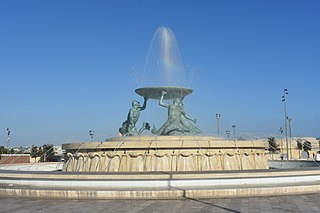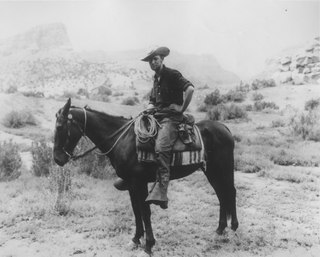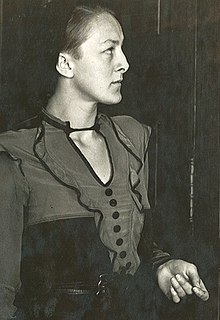 W
WVictor Anastasi (1913–1992) was a Maltese designer. He worked as a draughtsman with the Public Works Department, and although he never formally studied architecture, he was involved in the design process of numerous buildings. He was an admirer of Italian architecture, and often traveled to Rome where he often met with Maltese artists who were studying there.
 W
WAvigdor Arikha was a Romanian-born French–Israeli artist, printmaker and art historian.
 W
WShuvinai Ashoona is an Inuk artist who works primarily in drawing. She is known for her detailed pen and pencil drawings depicting northern landscapes and contemporary Inuit life.
 W
WThomas Badeslade was an English topographical draughtsman, who worked extensively with the engraver W. H. Toms.
 W
WDonald Beauregard was an American painter and charcoal drawer. Trained in Utah and France, he painted the landscapes of the American West. He died at age 30.
 W
WGiuseppe Bonavia was a Maltese draughtsman and architect who was mainly active in the second half of the 19th century. Born in Valletta, he was initially a clerk of works with the Royal Engineers, before becoming the Head of the Civil Service Works Department.
 W
WFrançois-Antoine Bossuet was a painter and draughtsman of the Belgian school.
 W
WAntoine Brice was a painter from Brussels.
 W
WJosé Cardero was a Spanish draughtsman and artist. He is most remembered for his work on the expedition of Alessandro Malaspina and the related expedition of Dionisio Alcalá Galiano. During the Galiano voyage Cordero Channel was named in his honor. Other places in British Columbia were later named in his honor as well, including Dibuxante Point, "dibuxante" being Spanish for "draughtsman".
 W
WFranz Caucig, Franco Caucig or Francesco Caucig, also known in Slovene as Franc Kavčič or Frančišek Caucig was a Neoclassical painter and drawer of Slovene origin. He is one of the best representatives of the Central European Neoclassicism. He attained the highest positions and recognitions of all the artists of Slovene descent.
 W
WAlexandru Cazaban was a Romanian prose writer.
 W
WMaximilian (also spelled Maksymilian) Cercha (1818–1907) was a Polish painter and drawer. He was the nephew of Ezechiel Cercha (1790–1820) and the father of Stanisław Cercha (1867–1919).
 W
WJohn Coney (1786–1833) was an English architectural draughtsman and engraver.
 W
WA drafter, draughtsman/draughtswoman, draftsman/draftswoman, drafting technician is an engineering technician who makes detailed technical drawings or plans for machinery, buildings, electronics, infrastructure, sections, etc. Drafters use computer software and manual sketches to convert the designs, plans, and layouts of engineers and architects into a set of technical drawings. Drafters operate as the supporting developers and sketch engineering designs and drawings from preliminary design concepts.
 W
WAn engineering technician is a professional trained in skills and techniques related to a specific branch of technology, with a practical understanding of the relevant engineering concepts. Engineering technicians often assist engineers and engineering technologists in projects relating to research and development, or focus on post-development activities like implementation or operation. An engineering technician is between a skilled craft worker and an engineering technologist.
 W
WAn engineering technologist is a professional trained in certain aspects of development and implementation of a respective area of technology. Engineering technology education is even more applied and less theoretical than engineering education, though in a broad sense both have a focus on practical application. Engineering technologists often assist engineers but after years of experience, they can also become engineers. Like engineers, areas where engineering technologists can work include product design, fabrication and testing. Also as with engineers, engineering technologists sometimes rise to senior management positions in industry or become entrepreneurs.
 W
WHenry Flitcroft was a major English architect in the second generation of Palladianism. He came from a simple background: his father was a labourer in the gardens at Hampton Court and he began as a joiner by trade. Working as a carpenter at Burlington House, he fell from a scaffold and broke his leg. While he was recuperating, the young Lord Burlington noticed his talent with the pencil, and by 1720 Flitcroft was Burlington's draughtsman and general architectural assistant, surveying at Westminster School for Burlington's dormitory, and superintending at the site at Tottenham House. Working life in the inner circle that was driving the new Palladian architecture was an education for Flitcroft.
 W
WHollis Hammonds is an American artist and academic, who is associate professor of art and chair of visual studies at St. Edward's University in Austin, Texas. Hammonds specializes in drawing and sculptural installations. She is author of the drawing textbook, Drawing Structure: Conceptual & Observational Techniques.
 W
WAdolf Hirémy-Hirschl (1860–1933) was a Hungarian, Jewish artist known for historical and mythological painting, particularly of subjects pertaining to ancient Rome. Some of his major history paintings have been lost, and many of his smaller works were retained by his heirs until the early 1980s. Although he was one of the most successful artists of fin-de-siècle Vienna, these circumstances, along with the rise of Gustav Klimt and the Vienna Secessionists, put his reputation in eclipse.
 W
WJoseph, Pierre, Tancrède Latour was a French Romantic Drawer and painter. His works are hosted by several museums in South of France.
 W
WEdvarda Klaudine Lie was a Norwegian painter, drawer, and illustrator.
 W
WJerzy Luczak-Szewczyk was a Polish-born Swedish painter, drawer and sculptor.
 W
WFilipp Andreevich Malyavin was a Russian painter and draftsman. Trained in icon-painting as well as having studied under the great Russian realist painter Ilya Repin, Malyavin is unusual among the Russian artists of the time for having a peasant background. It is possibly due to this that his paintings often depict peasant life, and his most famous work, Whirlwind, shows peasant women dancing.
 W
WJudith Mason born Judith Seelander Menge was a South African artist who worked in oil, pencil, printmaking and mixed media. Her work is rich in symbolism and mythology, displaying a rare technical virtuosity.
 W
WMarco Tobón Mejía (1876-1933) was a Colombian sculptor, draughtsman, and painter. He lived in France for almost all his career, where he met and formed relationships with several prominent artists, including Auguste Rodin, Aristide Maillol, and Antoine Bourdelle. He worked mostly within neoclassic and art nouveau styles, and is known especially for his sculptures in bronze, electroplate, and pewter. Several of his pieces can be found in the Colombian National Museum.
 W
WJohann Elias Ridinger was a German painter, engraver, draughtsman and publisher. He is considered one of the most famous German engravers of animals, particularly horses, hounds and hunting scenes.
 W
WNelbia Romero Cabrera was a Uruguayan visual artist. She began her career in drawing and engraving and later incorporated other artistic languages, such as photography, installation, and performance. Her work was marked by themes of politics and protest. She was an active participant in the Montevideo Engraving Club. She received a Guggenheim Fellowship in 1994 and was granted the Figari Award in 2006 for her artistic career.
 W
WCharlotte Schulz is an American visual artist best known for intricate charcoal drawings, sometimes composed of multiple sheets that she tears, folds and distresses in order to disrupt the two-dimensional picture plane. Her work explores personal and collective responses to traumatic, often-public, experiences and events, interweaving vignettes of landscape, interiors, disasters and unexpected elements in dreamlike combinations that upend spatial and temporal conventions. Artillery critic Seph Rodney describes her drawings as works of "elegant and surreal lyricism" that are exquisitely rendered, thick with detail, and perplexing in their mix of fractured visual logic, overlapping realities, and speculative ruminations on space and time.
 W
WHerman Diedrich Spöring Jr. (1733–1771) was a Finnish explorer, draughtsman, botanist and a naturalist.
 W
WJan Tengnagel was a Dutch draughtsman and painter.
 W
WAngelo Toselli, Italian artist, architect, scenographer, and vedutista.
 W
WPriscilla Wadsworth is a pencil artist who specializes in sports art, particularly related to Alabama Crimson Tide football. Her portrait of Mal Moore was displayed in the Paul Bryant Museum.
 W
WAntoine Wagner is an American-French visual artist. He works between Woodstock, NY and Paris, France. Through a visual language drawn from nature his work refers to mythological narratives and the sublime.
 W
WRobert White (1645–1703) was an English draughtsman and engraver. A Londoner, he was a pupil of David Loggan, and became a leading portrait engraver. White was celebrated for his original portraits, drawn in pencil on vellum in the manner of Loggan. He died in reduced circumstances in Bloomsbury Market, where he had long resided, in November 1703.
 W
WMartin Yeoman is an English painter and draughtsman who drew members of the British Royal Family. He was commissioned to draw the Queen's grandchildren and accompanied Charles, Prince of Wales, on overseas tours as tour artist. He is described as one of the finest draughtsmen working today and is a member of Senior Faculty at the Royal Drawing School.